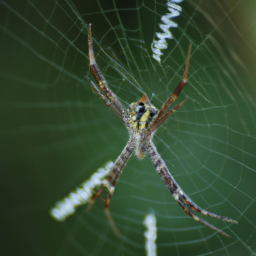How Long Garden Spiders Live
How Long Do Garden Spiders Live
How Long do Garden Spiders Live?
Garden spiders, which are also known as orb weavers, are some of the most commonly spotted spiders in gardens around the world. These arachnids can be found catching their prey in intricate webs and are quite beneficial to our environment. But for all their impressive adaptations, garden spiders live relatively short lifespans, from one to three years.
Lifespan Expectancy & Factors At Play
The typical lifespan for a garden spider is around one to three years, though the wide range in this number can be attributed to the various conditions and circumstances influencing the spider's life. The main things to consider when determining the lifespan of a garden spider are temperature and food.,
Temperature
Temperature is one of the external factors that plays an important part in determining the lifespan of a garden spider. Because garden spiders are cold-blooded, their body temperature is run by the environment, unlike warm-blooded mammals who can control their own body heat. Garden spiders in cooler climates tend to produce and move more slowly and can take their time to pursue food or build webs. In contrast, garden spiders in the hotter climates will fade away quickly. Usually, the higher their temperature, the shorter the spider's lifespan.
Food
Food availability and access is another major factor influencing the lifespan of a garden spider. Spiders in areas with little food and higher competition may not live for very long, especially during winters when food sources become increasingly scarce. On the other hand, spiders in better hunting grounds and with plenty of food will typically survive longer.
Adaptations That Help Spiders Survive
Garden spiders are equipped with adaptations that help them survive in the ever-changing environment. These adaptations help them make the most of their short lifespans by being able to outsmart other creatures and prey upon them, as well as use the ecosystems to their advantage.
Radial Orb Webs
The most iconic adaptation exhibited by garden spiders is the radial Orb webs. These webs are designed in a spiral pattern and serve to enable garden spiders to catch their prey quickly and efficiently. The shape of the Orb webs also has some aerodynamic features, helping to keep the webs in place during windy days.
Camouflage
Garden spiders are also skilled at the art of camouflage. Their webs and folded limbs help to disguise the spider from potential predators, as well as assisting them in blending in with their environment. This technique helps the spider to conserve energy and evade potential threats or dangers.
Conclusion
Garden spiders are incredible creatures and play a big role in nature. By understanding the environmental factors and adaptations that help them survive, we can gain a better appreciation for the life cycle of a garden spider and appreciate the beauty of these creatures.
Brief Recap
Garden spiders are fascinating arachnids and can be found in gardens around the world. Their lifespans are typically from one to three years, though environmental factors like temperature and food availability can influence this number. Garden spiders have several adaptations that can help them survive and thrive in their environment, such as careful camouflage and radial Orb webs that enable them to efficiently capture their prey.

Previous Page
Next Page
